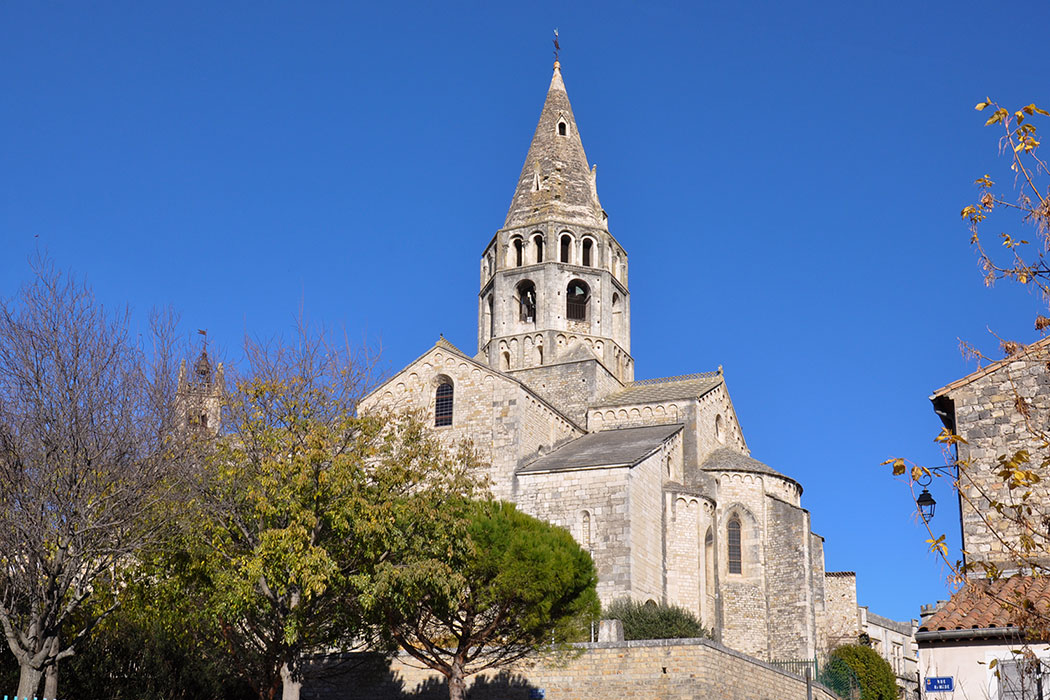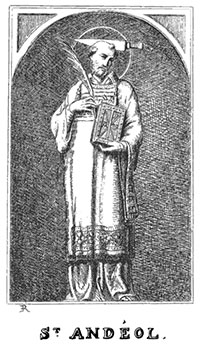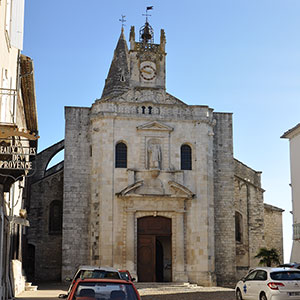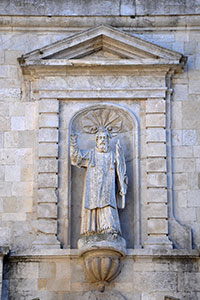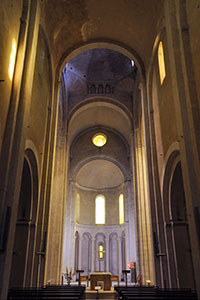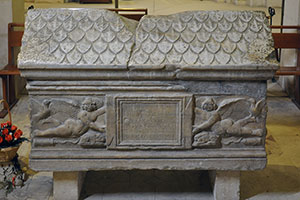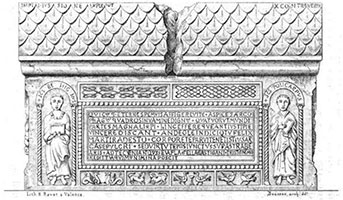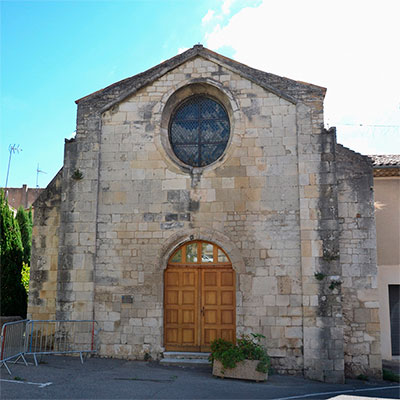The church of Saint-Andéol was built in the 9th century at Bergoïate (later Bourg-Saint-Andéol), on the banks of the Rhône, to honour the tomb of Saint Andeolus († 208). His burial place had been discovered only recently, and the growing number of pilgrims made the earlier sanctuary insufficient. The discovery took place in 858, during the episcopate of Bernoin († 874), bishop of Viviers, when the church of Saint-Polycarpe was erected with a crypt to house the tomb. The Frankish king Charles the Bald (840–877) contributed to its construction.
A native of Smyrna and disciple of Saint Polycarp, he was sent around 166 by his master to evangelize Gaul, together with Benignus, Andochius of Saulieu and Thyrsus. Andeolus settled at Bergoïate, where he was martyred in 208. According to tradition, his body was chained to a rock and thrown into the Rhône, but the current miraculously carried it to the riverbank, where a pious woman retrieved it and buried it in a sarcophagus. The burial place was later forgotten until its rediscovery in 858; a crypt was built over the tomb and, above it, the chapel of Saint-Polycarpe, which became a popular place of devotion.
A local tradition claims that Andeolus (Aniol) spent some time at Sant Aniol d’Aguja (Catalonia), where a small monastery was founded during the expansion of his cult.
Around the same time, work began on the new church of Saint-Andéol, a large structure allowing the veneration of the saint’s tomb, transferred here from Saint-Polycarpe. Under Bishop Leodegar of Viviers (1096–1124), a general renovation of the sanctuary was undertaken, with several structural repairs. In 1108, the bishop entrusted Saint-Andéol to a community of Canons of Saint Ruf. The building was consecrated in 1119 by Pope Callixtus II. Shortly afterwards, however, the canons were expelled by the local population and replaced by secular clergy, until Pope Innocent III formally reinstated them in 1206.
The church and canonical buildings suffered heavy destruction in 1562, during the Wars of Religion. They later entered a period of decline, paralleling the crisis of the Order of Saint Ruf itself, which was suppressed in 1774. In the 18th century further, important alterations were carried out. During the Revolution the church was closed, plundered, and turned into a Temple of Reason. In the 19th century it was restored, the liturgy was re-established (1804), and veneration of the saint’s relics resumed. Another restoration campaign followed in the second half of the century.
The present church is essentially Romanesque, largely dating from the time of Bishop Leodegar (12th century), though altered in later periods. It has three naves, a transept and a chevet with three semicircular apses. The west front is of modern date. It preserves the Roman sarcophagus originally made for Tiberius Valerianus, later reused as the tomb of Saint Andeolus.
- AUBERT, Marcel (1925). Bourg-Saint-Andéol. Congrès archéologique de France, 86 ss. Société française d'archéologie
- BESSE, J.-M.; i altres (1939). Abbayes et prieurés de l'ancienne France. Vol. 9: Province ecclésiastique de Vienne. Abbaye de Ligugé
- BOISSIN, Pierre (1932). Le Bourg-Saint-Andéol. Mémoires de l'Académie de Vaucluse. Vaison: Macabet
- ESQUIEU, Yves (1995). Bourg-Saint-Andéol. L'église de Saint-Andéol. Congrès archéologique de France, 150 ss. Société française d'archéologie
- GUÉRIN, Paul (1888). Les Petits Bollandistes. Vies des saints. Vol. 5. París: Bloud et Barral
- LABRÉLY, Robert (1979). Le vieux Bourg-Saint-Andéol. Largentière: Humbert
- MAÎTRE, Léon (1906). Un Martyrium du IVe siècle à Bourg-Saint-Andéol. Revue de l’art Chrétien. Lille
- MIRABEL, Onésime (1868). Saint Andéol et son culte. París: Palmé
- PARADIS, Auguste (1886). Églises romanes du Vivarais. Bourg-Saint-Andéol. Valence
- SAINT-JEAN, Robert (1991). Vivarais Gévaudan romans. La Pierre-qui-Vire: Zodiaque
